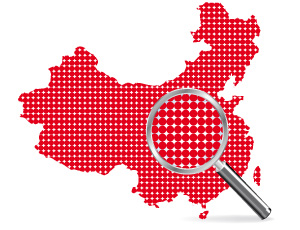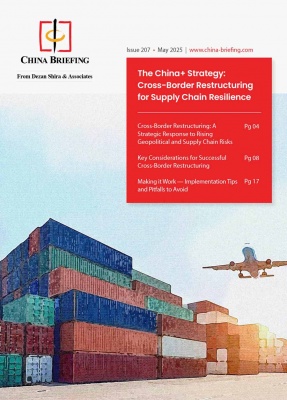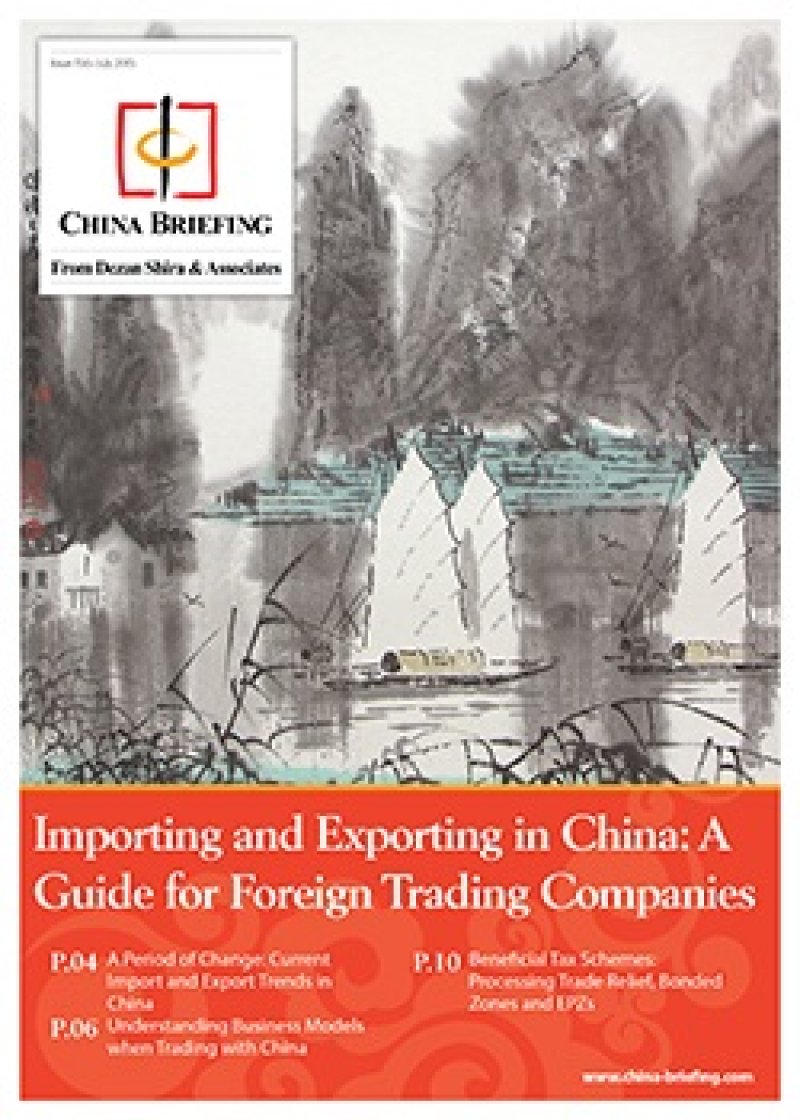Andrew Polk’s 2016 China Economic Forecast – Weaker Growth and More Volatility to Come
 Op/Ed by Andrew Polk
Op/Ed by Andrew Polk
Senior Economist, The Conference Board China
2016 is set to be the most uncertain year for China’s economy since the Global Financial and Economic Crisis of 2008-2009 threw international markets into chaos and saw global trade grind to a halt. China’s domestic economy clearly remains on a weakening trend, and the government is likely to lower its official 2016 growth target down to “around 6.5 percent” from “around 7 percent” in 2015 – as actual 2015 GDP growth looks set to officially come in at about 6.8 percent. Meanwhile, global trade growth is set to remain lackluster, so China’s economic managers will not be able to rely on external demand to revive a flagging manufacturing sector. As the deceleration in China’s growth deepens next year, businesses operating in the country should be on the lookout for specific areas of weakness – and volatility – in order to identify market vulnerabilities and to monitor potential opportunities to align with government priorities.
Before we look forward into next year, however, it will be instructive to quickly take stock of China’s major economic developments over these past 12 months. 2015 surprised global markets and businesses alike with two major bouts of financial volatility emanating from China. In June and July, a 30 percent fall in the Shanghai Composite Index over the course of 15 trading days, came in the immediate aftermath of a similarly sudden rise of 150 percent over the course of 11 months. The response by policymakers to stem the route was widely seen as ham-fisted. Then in August, the People’s Bank of China (PBoC, the country’s central bank) undertook a sudden and unannounced depreciation of China’s currency against the US dollar, allowing the exchange rate to weaken by almost 2 percent in a single day. These sudden developments caused outside observers to wake up to the China reality that most on-the-ground businesses had known for some time: China’s current economic challenges are deep and will be protracted.
But despite these challenges, the Chinese economy experienced some bright spots in 2015, as well. The services sector continues to grow rapidly – now accounting for 51 percent of GDP, up from 48 percent at the end of 2014. Moreover, official data around China’s wages and consumer purchases indicate that China’s household spenders have fared reasonably well despite a significant drop off in country-wide investment growth. Both of these developments show that the rebalancing of the economy – away from government-led investment toward more sustainable reliance on consumption and services growth – continues to move forward, if only very gradually. Finally, despite concerted investor focus on capital outflows from China and concomitant currency weakness, the depreciation of China’s exchange rate in 2015 was much milder than other emerging Asian currencies. Moreover, even in the face of greater currency volatility, the IMF decided in November that next year it will allow the RMB into the basket of currencies that make up the Special Drawing Right – an international reserve asset issued by the IMF. This was certainly a symbolic victory for China’s leadership.
These positive aspects around economic growth remind us that a sudden economic collapse, or a financial or currency crisis, does not seem likely for China in 2016. Rather, the sluggish growth environment that the economy has experienced since 2012 is set to continue, and deepen somewhat, as China’s economic transition enters its fifth year. However, China’s slowing growth trend will continue to be accompanied by more regular bouts of economic and financial volatility – as the economy changes and returns on investment continue to fall along with GDP growth. Because of this reality, in this piece we seek to flag the most important areas of China’s economy that will be vulnerable next year.
The three aspects of China’s economy that we examine below are set to drive the global narrative in regard to China’s economy in 2016. They also are squarely on the agenda of policymakers, as they know that potential volatility may lurk in each sector. Finally, next year’s developments in the three areas below will be of critical importance to shaping market size and dynamics, the overall businesses environment, and potential risk scenarios for companies doing business in China in 2016.
 RELATED: Pre-Investment and Entry Strategy Advisorys
RELATED: Pre-Investment and Entry Strategy Advisorys
Real Estate
In 2015, the primary drivers of slower growth in China were lower rates of capital investment throughout the country combined with sever overcapacity in a broad range of upstream industrial sectors. Real estate investment, in particular, grew at a measly 1.3 percent through the first eleven months of this year, compared to average growth rates of 21.6 percent over the last decade. Because real estate spending typically accounts for about 18 percent of overall investment in China, such subdued capital expenditure in the property sector has been perhaps the primary headwind to growth in recent months.
These dynamics in the property market are set to continue playing out next year. High real estate inventories in China’s Third- and Fourth Tier cities will mean that existing units must be sold off in large numbers – and for a sustained period of several quarters – before developers can begin breaking ground on new projects. In some ways, these developments are healthy, given that real estate has played an outsized role in China’s growth story in recent years and the market needs a chance to adjust before the sector can begin to grow sustainably.
Indeed, some analysts are even projecting that real estate investment may actually contract on an annual basis in 2016. This would be unprecedented in China’s modern economic history – as the four consecutive months of year-over-year contraction that occurred from August through November of 2015 already mark by far the weakest stretch that property investment has seen in China to date. But even if real estate spending outperforms market expectations by coming in at a slightly positive growth rate, the sector will continue to provide a drag on headline economic growth. Moreover, weakness in new property starts will have knock-on effects for a range of other industrial and light manufacturing sectors – from cement, to iron ore, to washing machine units and small kitchen appliances.
At the Central Economic Work Conference that took place in late December (i.e. the annual meeting at which China’s policymakers set the broad economic policy agenda for the next year), property destocking was specifically listed as a concern for 2016. Indeed, China’s economic managers are aiming to speed up the pace of urbanization through greater hukou reform, while focusing on providing better social housing coverage and likely removing some restrictions on home purchases on a market-by-market basis. Each of these moves will help to increase purchasing rates in the property sector, and thus accelerate the pace of the inventory drawdown that occurred in 2015, but they are unlikely to be enough to substantially increase new investment rates over the course of the year, if at all. Thus, any rebound in construction activity is only set to come to fruition in 2017, and if policymakers’ efforts to buoy the sector are ineffective, a property recovery could be even further off.
Banking System
China’s banking system is also set for another challenging year ahead. The quality of bank assets has been deteriorating in recent years, as corporate profitability – particularly in the industrial sector – has weakened steadily. Indeed, officially reported non-performing loans at China’s banks have now risen for 16 consecutive quarters to stand at 1.2 trillion RMB as of Q3 2015. This vulnerability will worsen throughout the course of 2016 as sluggish growth combines with a high debt burden in China’s private sector.
While a weakened banking system may seem somewhat tangential to individuals running business on-the-ground in China, there will be real world repercussions of these challenges. The first is that we are likely to see continued bouts of volatility in China’s credit markets along with a subdued rate of growth for overall credit. With the rising likelihood of defaults on bank loans and corporate bonds (which are primarily held by banks), authorities will be called on to step in to commit resources to bailout borrowers and repay creditors – i.e. the banks and their ultimate funders, China’s household depositors.
As we saw over the course of the summer in China, when the authorities were estimated to be spending around 400 billion USD per-month to defend the A-share market and the weakening RMB-USD exchange rate, these resources can quickly amount to very large sums. Committing such substantial amounts of State resources toward bailout measures may ultimately have a significant impact on the ability of China’s policymakers to achieve other economic goals. In July of 2015, for example, 891 billion RMB of lending was extended to the non-bank financial institutions acting on behalf of the government to halt the slide in China’s A-share market. Meanwhile, only 589 billion RMB of loans went to funding activity in the real economy – substantially hampering banks’ ability to finance real economic growth.
What’s more, as default pressures rise in 2016, so-called credit events and the working out of those obligations may have a disruptive effect on local and regional supply chains. In order to avoid such disruptions, companies need to invest greater resources toward understanding the financial health of their counterparts along a given supply chain within China – regardless of the industry within which one operates. Such financial disruptions could lead to greatly expanded accounts receivable if a company’s buyers do not have the capital to make good on purchases, or they can lead to delays in needed inputs if a company’s suppliers cannot fulfill existing orders due to financial constraints. Both of these dynamics have occurred with increasing frequency in recent years, and accumulating pressure on China’s banks in 2016 is likely to mean that bridge financing to deal with such issues may be less available. As such, understanding the financial vulnerabilities of one’s Chinese partners is becoming ever more important in assuring that business is not disrupted.
More broadly, challenges to the banking system and the resulting financial volatility that it causes can have an impact on both business and consumer sentiment. If a broad range of businesses become even more reluctant to undertake capital expenditures in 2016 due to an environment of financial uncertainty, or if China’s consumers become more cautious and concerned about their own economic prospects, financial volatility could further slow an already subdued economy.
We broadly expect that Chinese authorities will be equipped to react to the worsening performance of the banking sector in 2016, and that a full-blown country-wide financial crisis is not in the cards for next year. However, as the economic slowdown hits different parts of the economy disproportionately, certain areas of the country may face acute challenges. The northeastern rustbelt, in particular, will be an area to monitor. The three provinces that make up that portion of the country – Liaoning, Jilin and Heilongjiang – are already reporting official GDP growth rates of 2.7 percent, 6.3 percent and 5.5 percent, respectively. And the recent bond default of the Shanshui Cement company in Liaoning, which occurred in November, provides a stark example of how those low growth rates can combine with credit events to truly disrupt a local economy.
RMB Weakness
As China’s economy slows, capital outflows are set to accelerate and China’s currency will come under further depreciation pressure throughout the course of 2016. Developments regarding the RMB largely defined how global investors viewed China throughout the course of this past year, and they will continue to do so over the next 12 months. The fact that the IMF is set to include the RMB in the basket of currencies that make up the Special Drawing Right in October next year means that global investors will continue to keep a keen eye on developments in China’s currency regime. These dynamics will also have significant impacts on both domestic and foreign companies doing business in China, so understanding the outlook for the RMB will be of extreme importance.
The RMB-USD exchange rate has depreciated by 4.4 percent throughout the course of 2015. And 2.6 percentage points of that downward movement have come since the end of October alone. This weakness is set to accelerate in Q1 of next year. As the Federal Reserve continues to hike interest rates throughout 2016, and as the People’s Bank of China simultaneously cuts its own benchmark interest rates, the interest differential between the two currencies will further shrink.
The reason these movements are so important is that it was the wide interest rate differential between the two economies, along with engrained market expectations of RMB appreciation, that drove much of the capital inflows into China in recent years. Domestic Chinese companies, in particular, were able to borrow dollars cheaply through their subsidiaries in Hong Kong, then convert those cheap USD borrowings into RMB and make a handsome return via high rates of interest on the mainland (around 7 percent throughout 2013, for example) and a strengthening exchange rate (the RMB rose 2.9 percent against the dollar in 2013).
These dynamics have now gone into reverse. As the Chinese economy slowed throughout 2015 and the central bank cut interest rates in response, the returns on dollar borrowings became unprofitable. Hence, the need to unwind these dollar borrowings was one of the primary drivers of capital outflow from China in 2015, and these dynamics will only heighten next year as the Fed tightens further and the PBoC enacts more loosening measures.
More importantly, all of these dynamics are increasingly hindering China’s ability to support domestic growth via monetary loosening. Throughout 2015, the central bank has sold down its foreign exchange holdings in order to buy RMB and thus protect the value of the domestic currency. These operations reduce the supply of RMB in the domestic economy, draining bank liquidity and negating the PBOC’s efforts to stimulate the economy through greater credit creation. In order to make domestic monetary policy more effective, then, the central bank has recently had to allow the exchange rate to weaken to some extent – in order to keep from restricting domestic liquidity growth. And as economic growth slows further, and capital outflows intensify in 2016, further RMB weakness – on the order of 5 percent – is set to come to fruition. Indeed, we expect an exchange rate of about 6.7 RMD-USD by the end of Q1 and 6.8 by end-2016.
A weaker RMB will clearly effect international transactions that companies operating in China undertake, and many companies in China are already actively hedging against greater currency weakness. For companies listed in the U.S., a depreciating currency will also negatively affect USD-denominated profit reports. As many companies rely heavily on China for global revenue and profit growth, preparing the market for this weakness during reporting season will be key to shaping the market’s perceptions of corporate performance. More broadly, a weakening currency may sour global investment sentiment toward China, causing both global corporations and financial investors to be cautious about increasing investment in the country.
Finally, while the PBoC has the needed to tools to support liquidity creation in a year of intensifying capital outflows, there remains a not-insignificant risk that a policy misstep may occur. If the central bank were not active in responding to future U.S. interest rate hikes, via offsetting domestic liquidity operations and a modest amount of currency weakness, the resulting financial tightness could grind credit creation – and thus overall economic growth – to a sudden halt. This potentiality is not our baseline scenario by any means. However, it is a tail risk that clearly exists, and corporate scenario planning for 2016 should involve a contingency plan for such a policy misstep.
Conclusion
Ultimately, the most likely scenario for the Chinese economy in 2016 involves slightly weaker headline economic growth and continued difficulties in the business environment that come along with a slow-growth atmosphere. The one thing that is perhaps most certain is that China’s economy is not set for a significant rebound in momentum in 2016. But weakening economic growth is most often accompanied by more frequent bouts of volatility, as has clearly been experienced by China in recent years. We assess that the three areas outlined above provide the most likely avenues for such volatility to erupt in China next year. And while they are unlikely to derail the economy altogether, companies should be prepared for the greater uncertainty – among customers, business partners, and competitors – that may well emanate from the parts of the economy outlined above. Understanding the potential challenges emanating from these avenues, and staying laser-focused on improving operational efficiency in the face of economic uncertainty, can help companies ride out temporary market disruptions when others are caught off guard.
Andrew Polk is a widely respected economist with the Conference Board China Centre in Beijing. He was especially commissioned to produce this article exclusively for China Briefing.
|
Asia Briefing Ltd. is a subsidiary of Dezan Shira & Associates. Dezan Shira is a specialist foreign direct investment practice, providing corporate establishment, business advisory, tax advisory and compliance, accounting, payroll, due diligence and financial review services to multinationals investing in China, Hong Kong, India, Vietnam, Singapore and the rest of ASEAN. For further information, please email china@dezshira.com or visit www.dezshira.com. Stay up to date with the latest business and investment trends in Asia by subscribing to our complimentary update service featuring news, commentary and regulatory insight. |
![]()
 Selling, Sourcing and E-Commerce in China 2016 (First Edition)
Selling, Sourcing and E-Commerce in China 2016 (First Edition)
This guide, produced in collaboration with the experts at Dezan Shira & Associates, provides a comprehensive analysis of all these aspects of commerce in China. It discusses how foreign companies can best go about sourcing products from China; how foreign retailers can set up operations on the ground to sell directly to the country’s massive consumer class; and finally details how foreign enterprises can access China’s lucrative yet ostensibly complex e-commerce market.
Importing and Exporting in China: a Guide for Trading Companies
In this issue of China Briefing, we discuss the latest import and export trends in China, and analyze the ways in which a foreign company in China can properly prepare for the import/export process. With import taxes and duties adding a significant cost burden, we explain how this system works in China, and highlight some of the tax incentives that the Chinese government has put in place to help stimulate trade.
Using China’s Free Trade & Double Tax Agreements
In this issue of China Briefing, we examine the role of Free Trade Agreements and the various regional blocs that China is either a member of or considering becoming so, as well as how these can be of significance to your China business. We also examine the role of Double Tax Treaties, provide a list of active agreements, and explain how to obtain the tax minimization benefits on offer.
- Previous Article China Market Watch: China’s FDI Inflows in 2015 and Recent Policy Changes to the Labor Market
- Next Article Tianjin: China’s High-tech Manufacturing and Logistics Hub




























